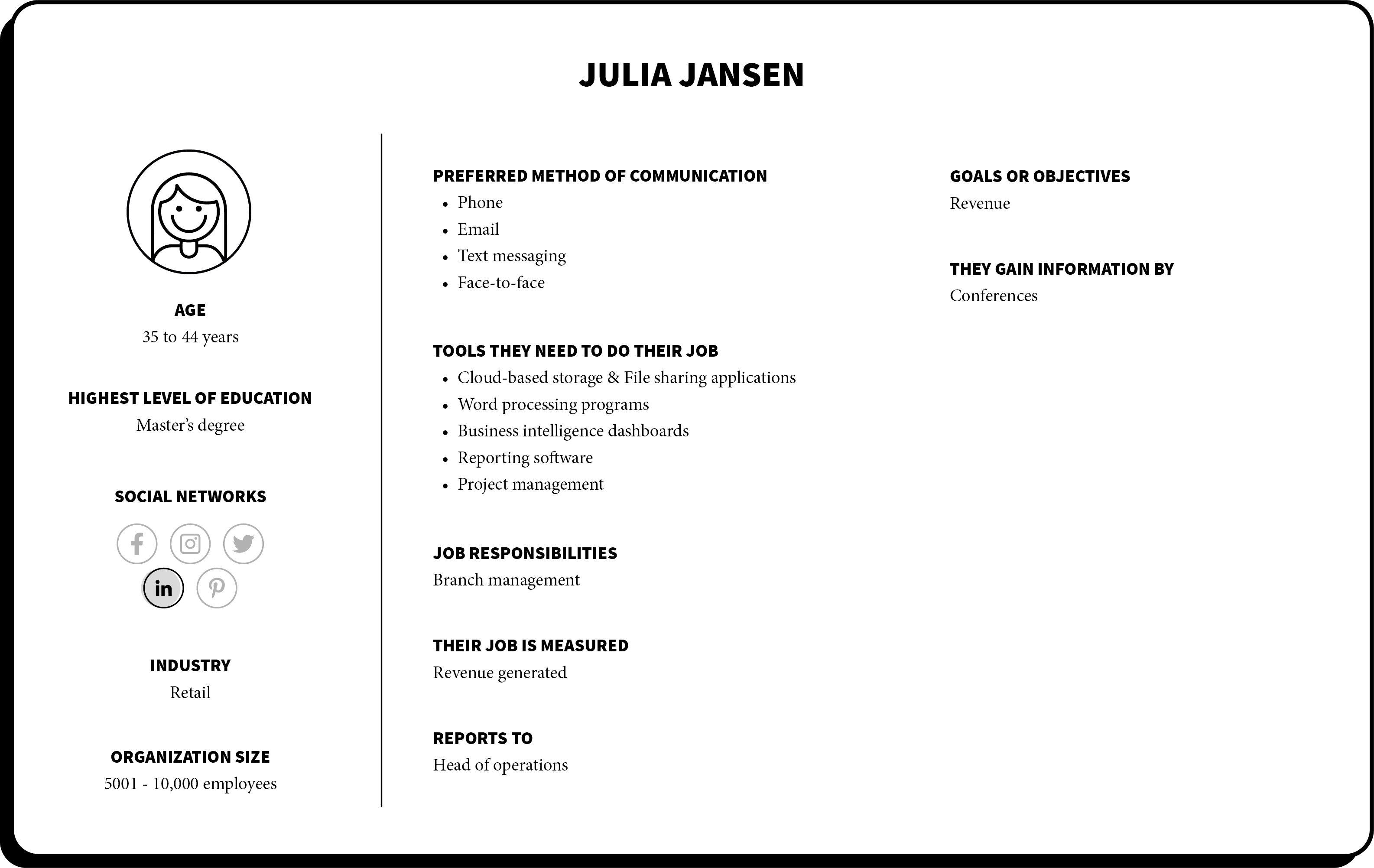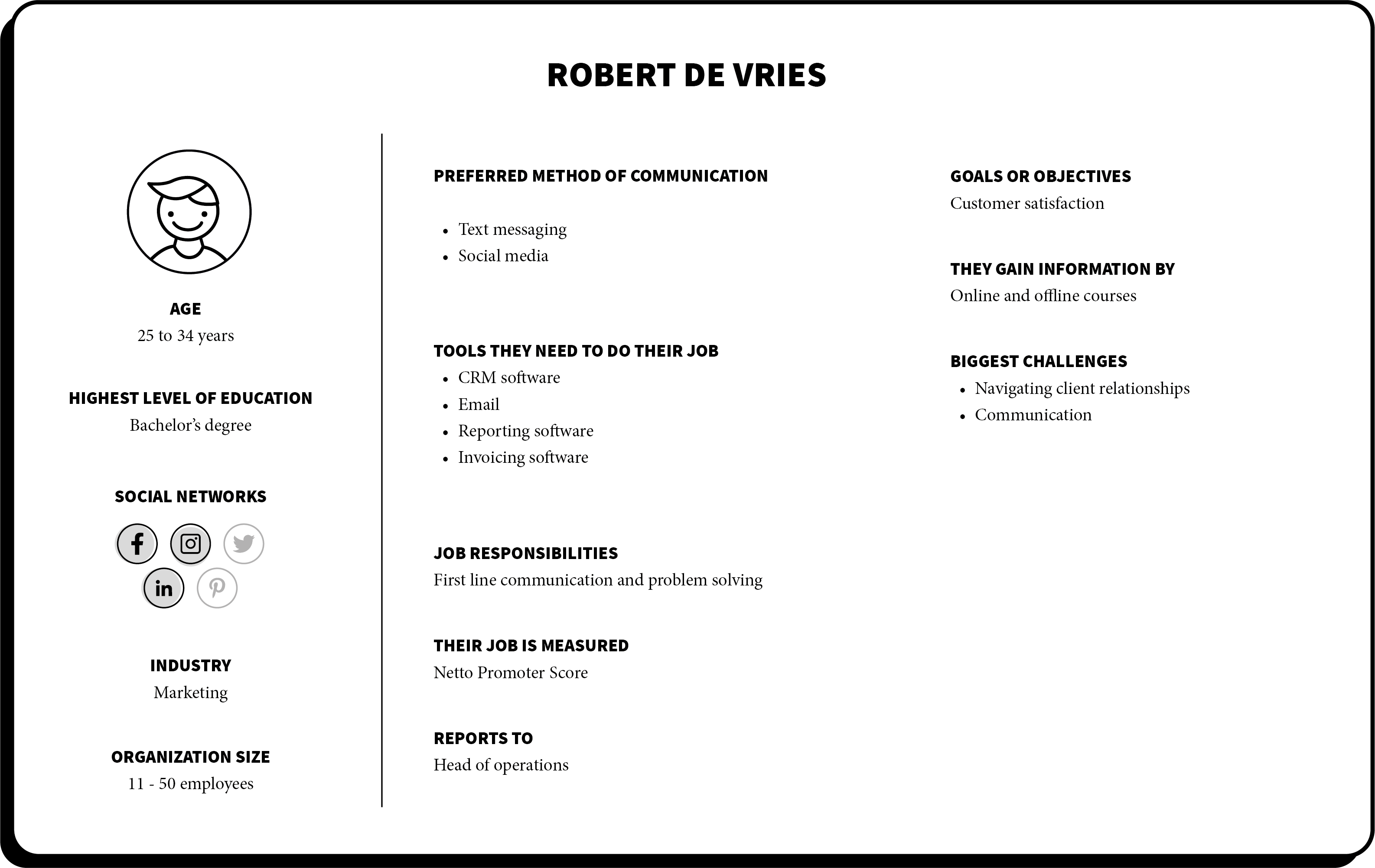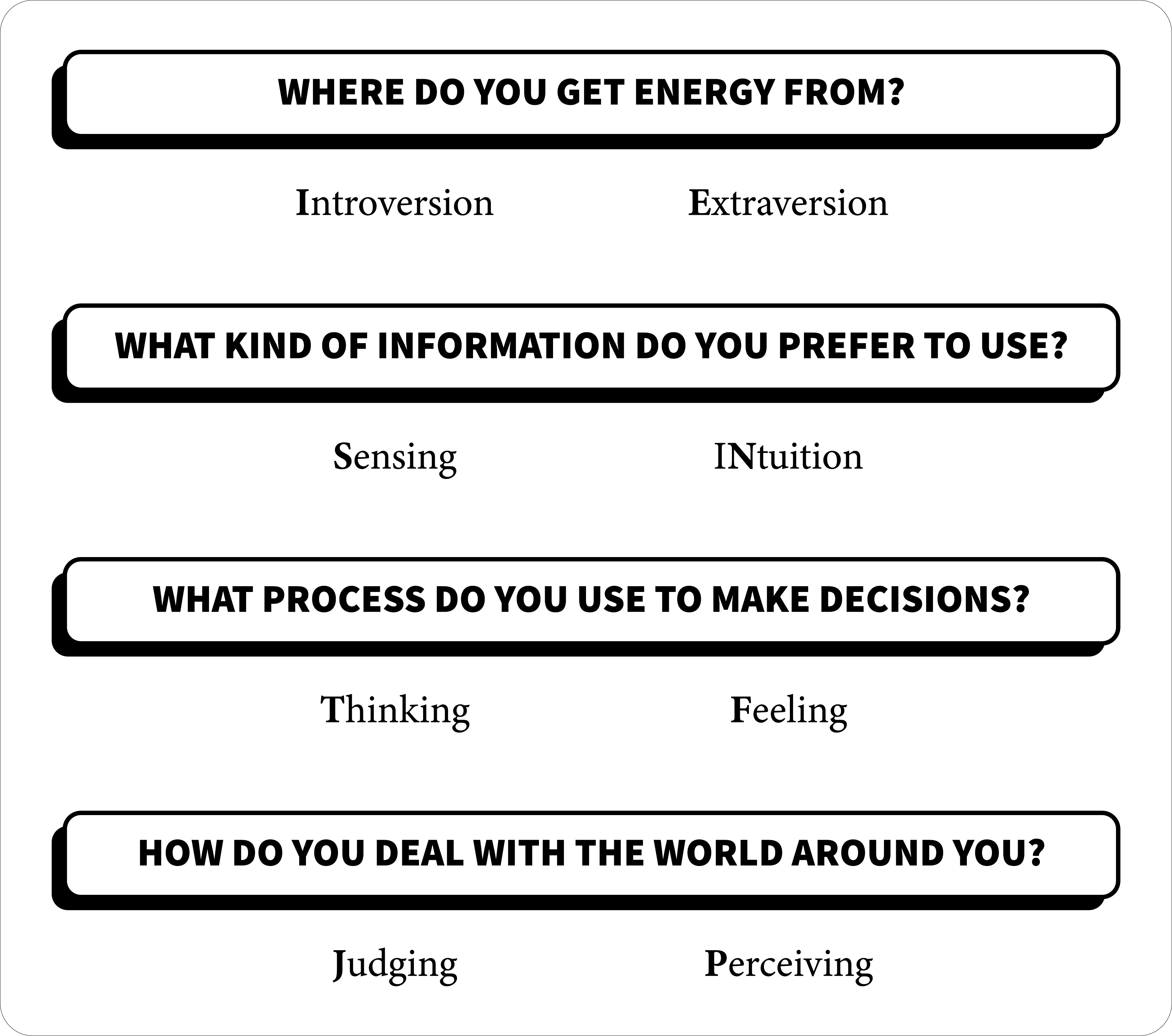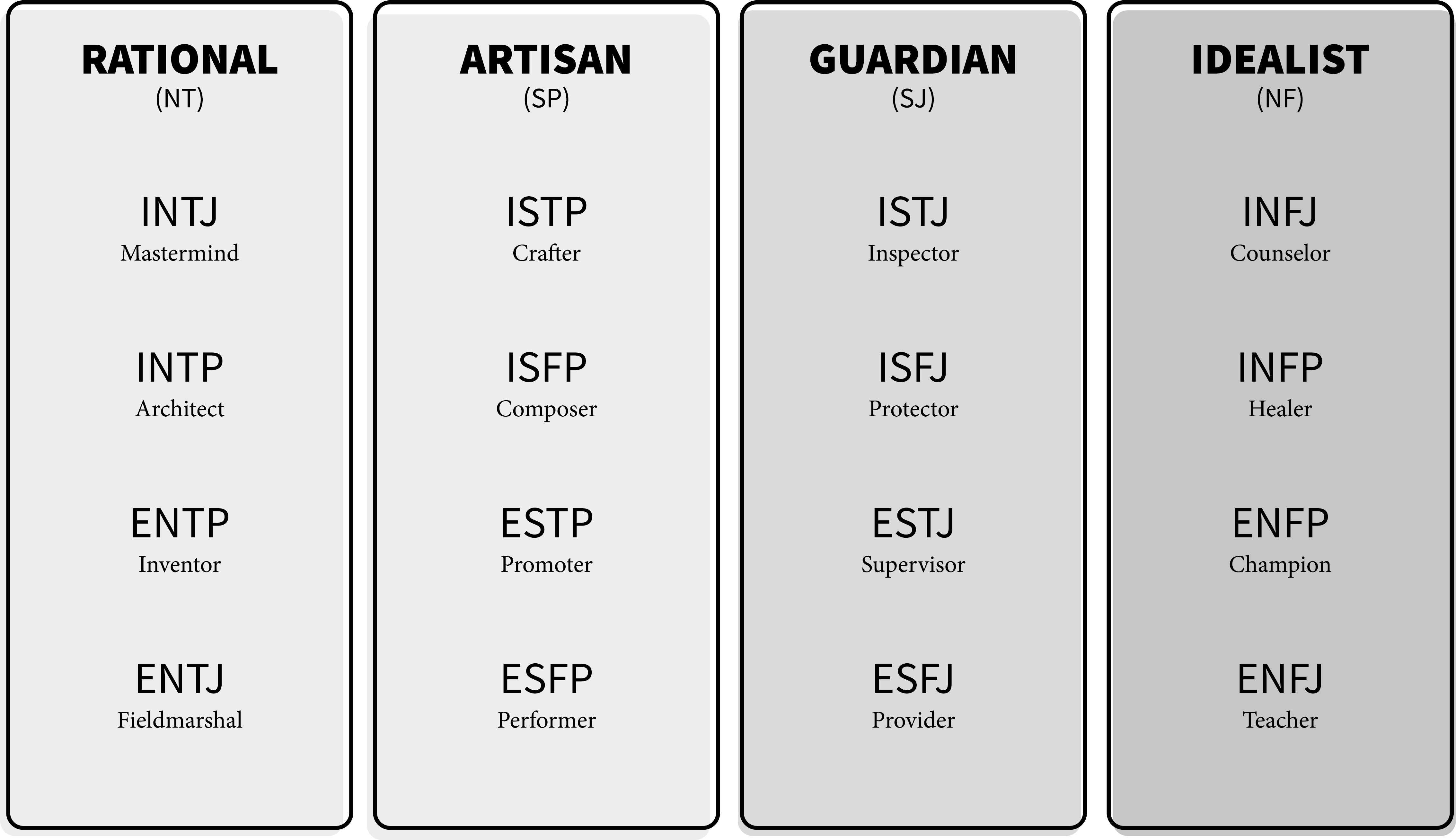MBTI: Tune your B2B platform to your users.

In every industry you have to deal with focus groups, both in the business-to-consumer world (B2C) and the business-to-business world (B2B). But how do you make sure you map out these focus groups with their unique search and decision-making behaviour, so that you can tailor your platform perfectly to them and convert visitors faster? In this blog, we take you into the world of B2B and find out how to map the needs of your focus groups using personas and tailor your website to your personas with MBTI.
We previously wrote several articles on personas in the leisure and travel industry. As B2C is often ahead of B2B, these blogs are also definitely recommended for B2B organisations.
In this blog, we answer the following questions:
- What roles should you consider in the B2B sales process?
- How do you map out your these stakeholders?
- How do you capitalise on the unique decision-making behaviour of your target audiences?
- And how do you make sure you perfectly align your web platform with your visitors and get them to convert faster?
Discover the different stakeholders in the sales process with DMU.
To map your focus groups, let's start at the beginning. You as an organisation target specific sectors in different predefined countries. Then, for each sector, you will look at how the buying process is set up. An increasingly complex process, within B2B, with multiple stakeholders (nowadays more than 11!) and each with their own role. So it is essential to discover how, within each sector, the buying process is set up; who are involved? Who are the decision-makers? And who are the influencers?
You can then incorporate this information into Philip Kotler's Decision Making Unit (DMU). This model gives a clear overview of all the individuals and groups within an organisation that have 'a role' in the decision-making process for buying new products or services.
This role is one that seeks, influences and/or makes the decision. Within B2B, you often deal with resellers, engineers and end users. By identifying who has which role with the potential customer, you can further develop them into personas. Well-developed personas (which you will learn more about in the next steps) ensure that you offer relevant content for each role and in each step of the sales process. This way, you make sure you are the right choice for them.
If you are working in the B2B manufacturing industry, your DMU could look like this:

Map these stakeholders with a persona.
To map these stakeholders with their unique roles, you can use personas. Personas have been used since 1998 to better understand the different users of a product. By creating a persona, the different users became more specific, and it was easier to empathise with the unique needs of each unique user.
Over the years, several fields have started using personas. A persona is therefore not just focused on the user, but is better thought of as a customised semi-fictional persona that you can use to map out your entire target audience or a segment of it.
During the creation of a persona, it was easier to empathise with the unique needs of each unique user.
During the creation of a persona, you gather information about, for example, age, gender, family situation, motives, desires and goals in life. By collecting as much useful information from your personas as possible, you can predict the behaviour of your focus groups much better.
Models for creating a persona.
To create a persona for your company, we use several models at Sterc. These models help us divide target groups into focus groups, which we in turn translate into personas.
One of these models is the 'Persona Checklist'. Based on a list of components, we can create a persona. Think of components such as demographics, geography and behaviour. At Sterc, we focus on these personas, among others:
- Buyer Persona: A detailed profile of an ideal customer.
- User Persona: A detailed profile of an ideal user.
- Candidate Persona: A detailed profile of an ideal job candidate.
For example, if you work in retail, a regional manager's persona might look like this:

If you work at a marketing company and are looking for a new customer support representative, the persona will look something like this:

Tip!
Want to get started creating personas yourself? Then go to https://www.hubspot.com/make-my-persona. This free tool from HubSpot allows you to learn more about personas and develop your own persona directly.
Give your persona a character with MBTI.
The persona and the DMU model provide a solid foundation for understanding your target audience. Yet we find that in B2B, these two models are often not enough. We have found that most personas lack essential components to explain the behaviour shown. Therefore, at Sterc, we supplement personas with character traits and a personality type. This way, we can not only explain the behaviour shown, but we can also encourage the desired behaviour. One of the models we use for this purpose is the MBTI model. In fact, this model allows us to differentiate people into 16 different personality types.
The basis of the MBTI Model was laid by Swiss psychiatrist and psychologist Carl Gustav Jung. The further development was in the hands of Katherine Cook Briggs and Isabel Briggs Myers. According to these founders, a personality type can be identified by four basic preferences. Each basic preference consists of two possibilities. To find out your basic preference or that of your personas, answer the following questions:
- Where do you focus your attention? - Extraversion (E) or Introversion (I)
- How do you take in information? - Sensing (S) or INtuition (N)
- How do you make decisions? - Thinking (T) or Feeling (F)
- How do you interact with the world around you? - Judging (J) or Perceiving (P)

When a choice has been made between the two options, the bold letters give you a letter combination that reveals your personality type. There are 16 possible combinations, each representing a personality type.
INTJ - INTP - ENTP - ENTJ
ISTP - ISFP - ESTP - ESFP
INFJ - INFP - ENFP - ENFJ
ISTJ - ISFJ - ESTJ - ESFJ
With the help of these personality types, you will know why your focus groups have certain preferences. As a result, a persona not only becomes vivid but genuinely forms a tailored semi-fictional persona. In other words, an informed reflection of a (potential) customer. And when certain customer preferences are insightful, a customer can be better served.
Tip!
Want to discover which personality type you are? Then fill in the MBTI questionnaire at https://www.16personalities.com/nl/persoonlijkheidstest.
From personality type to website optimisation in three steps.
After defining the focus group and using MBTI to hang a personality type here, we can use this to align your website with your personas. Below, we give three steps that will ultimately help you arrive at a website that is perfectly aligned with your focus groups.
Step 1 - Keirsey Temperament Sorter

At the first step, we use Keirsey Temperament Sorter (KTS). David Keirsey designed this model to better understand himself and others. To do this, he designed personality types using the knowledge of Hippocrates and Plato. Keirsey then used four temperaments which he divided into two roles and two role variants. This gives you 16 personality types that match those of the MBTI Model. So when you have gone through the MBTI questionnaire and found out what your personality type or that of your persona is, you can see which temperament goes with it.
Each temperament can be explained using four rings:
First ring - Abstract vs. Concrete
Do you often walk with your head in the clouds? Then you fall under 'Abstract'. Often these are also more introspective people who are more focused on the 'why'. Are you more observant and focused on more concrete things like food and shelter? Then you fall into the 'Concrete' group.
Second ring - Cooperative vs Pragmatic
If you are focused on doing good because of other people's opinions, then you fall under 'Cooperative'. When you act effortlessly in a way so that something works, you fall under 'Pragmatic'.
When you act effortlessly in a way so that something works, you fall under 'Pragmatic'.
Third ring - Instructive vs Informative
Communicate more instructively, you fall under the role 'Instructive'. Do you communicate informatively, you fall under the role 'Informative'.
Fourth ring - Expressive vs. Reserved
When you act almost immediately before observing, you fall under 'Expressive'. If you observe and then act from this observation, then you fall under 'Reserved'.
Step 2 - The Four Buyer Modalities

Because you now know why which temperament matches which personality type, this step becomes easier. In fact, these temperaments can in turn be linked to Jeffrey and Bryan Eisenberg's Four Buyer Modalities. These two brothers argue that there are four different types of groups, divided into Competitive, Spontaneous, Methodical and Humanistic.
In which group you or your persona falls depends on how quickly you make choices and whether this choice is based on emotion or logic. This model owes its popularity to its simplicity. Anyone can easily place themselves or others into one of the four possibilities.
In the end, it is not just convenience that makes it deployed. In particular, it is deployed because websites without personalisation are out of date. 83% of internet users will not return to a website that does not meet this basic expectation 2. The question that people and therefore your potential customers are constantly walking around with is; "What it's in it for me?". The Eisenberg brothers' four modalities help answer this question. How? You'll find out in the next step.
Step 3 - The translation
Theory is fine, only you want to be able to link practice to it. Now that we know the personality type temperament and decision preference, the translation can be made to your digital platform.
In the previous step, you found out what decision preference your personas have. Below we explain in more detail what exactly these decision preferences mean and how you can capitalise on them.
Competitive
The competitive visitor is analytical and intuitive. Unlike the spontaneous and humanistic visitor, the competitive visitor decides based on reason. This visitor can therefore make connections quickly. He needs only a few handles and the rest he or she fills in himself. The intuitiveness of this visitor ensures that he does not need long texts. Instead, it helps to post an expert's opinion, show pictures and display a list of benefits.
Spontaneous
In contrast to the competitive visitor, the spontaneous visitor is actually guided by emotions - just like the humanistic visitor. The big difference between the humanistic and the spontaneous visitor is that the spontaneous visitor is easily distracted and thus makes quick decisions. You can help this visitor with insight about the service, positive reviews and a short ordering process.
Methodical
Like the competitive visitor, the methodical visitor makes decisions based on facts. The methodical visitor is the exact opposite of the spontaneous visitor, and due to his search for information will not easily make a mis-sale. Some examples with which you can help a methodical visitor are lists of specifications, features that allow comparisons to be made and demonstration of warranties.
Humanistic
The humanistic visitor is one who values relationships and reliability. This visitor views pages in detail, and therefore makes decisions slowly and based on emotion. The humanist visitor's behaviour is opposite to that of the competitive visitor. Therefore, they look for a website with a lot of depth, 'Frequently Asked Questions (FAQ) and labels.
So, quite a bit of reading so far on web optimisation. We believe that web optimisation itself does not have to be very exciting. It would be a shame when a lot of time and budget is spent and then it does not deliver the desired results. This is why we pay a lot of attention to models such as the MBTI model, the Keirsey Temperament Sorter and the Four Buyer Modalities. These models help in understanding basic preferences which allows responding to decision preferences.
Sources:

